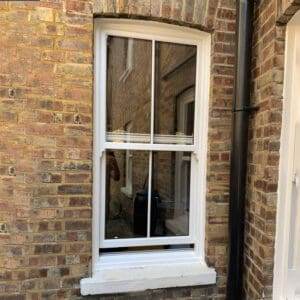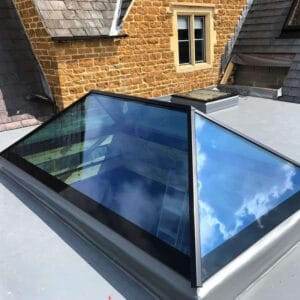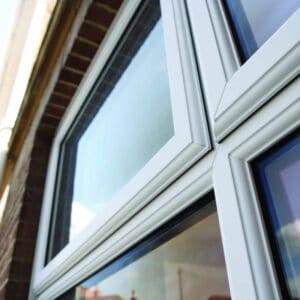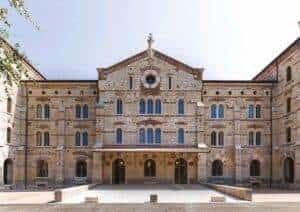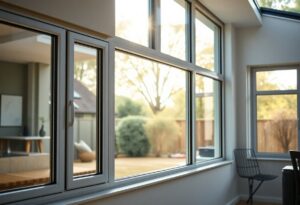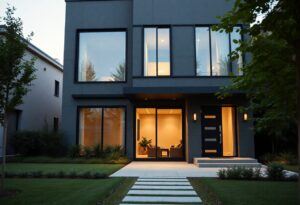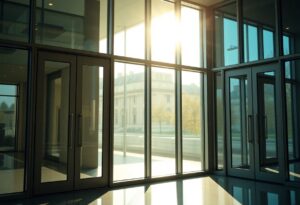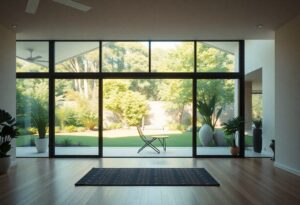Over time, you may have noticed the importance of structural stability in your home’s windows and doors. Understanding the role of reinforced corners, welds, and joints in R2 profiles can significantly affect your property’s durability and safety. These features not only enhance strength and resilience but also contribute to improved energy efficiency and aesthetics. By being informed about these elements, you can make better choices for your home’s installations and ensure long-lasting performance.
The Importance of Structural Stability
A solid understanding of structural stability is necessary for ensuring the longevity and safety of your R2 window and door profiles. By focusing on reinforced corners, welds, and joints, you can significantly enhance the overall integrity of your installations, reducing the risk of failure and costly repairs.
Defining Structural Stability
Along with durability, structural stability refers to the ability of a structure to withstand loads without experiencing failure. It encompasses the strength of materials and the design efficiencies in the connections, ensuring that your windows and doors perform optimally over time.
Impact on Performance and Longevity
Structural integrity significantly affects the overall performance and longevity of your windows and doors. When you invest in designs with robust reinforcement, your installations are less susceptible to strain and deformation, giving you peace of mind that your investment will endure.
Defining the impact of structural stability can’t be overstated. High-quality welds and firm joints not only reduce potential risks of failure but also enhance the energy efficiency of your windows and doors. This means that with proper reinforcement, you will see improved thermal performance and reduced maintenance costs. Additionally, ensuring your frames can handle environmental stresses leads to enhanced user satisfaction and maintains the aesthetic appeal of your property over time.
Reinforced Corners in Window & Door Profiles
Clearly, reinforced corners play a significant role in the longevity and stability of your window and door profiles. These enhancements provide additional strength at critical junctions, ensuring that your installations withstand both everyday wear and extreme weather conditions. This reinforcement is vital for maintaining the structural integrity of your products, enabling them to perform effectively over time while enhancing their overall aesthetic appeal.
Engineering Techniques
For achieving optimal reinforcement in your window and door profiles, various engineering techniques can be employed. These methods involve incorporating materials that increase strength and resilience while ensuring compatibility with existing designs. By utilising advanced fabrication processes, you can create profiles that meet stringent performance standards.
Benefits of Reinforcement
By incorporating reinforcement techniques, you enhance the overall durability of your window and door profiles, significantly reducing the risk of deformation or failure under stress. This not only extends the lifespan of your installations but also contributes to improved energy efficiency, which ultimately leads to greater savings on heating and cooling costs.
Understanding the benefits of reinforcement goes beyond mere strength; it encompasses protection against environmental stressors and enhanced security for your property. Strong, reinforced corners help maintain the shape and functionality of your installations, reducing the likelihood of air leaks or water ingress. Additionally, this reinforcement provides greater resistance to breakage, ensuring your home remains secure. Overall, investing in reinforced corners means you can enjoy peace of mind knowing your windows and doors are built to endure.

The Role of Welds in Profile Integrity
If you consider the significance of welds in maintaining the structural integrity of R2 window and door profiles, you’ll recognise they are necessary for ensuring strength and durability. Welds create an unyielding bond between components, preventing separation or deformation under stress. Without robust welds, your profiles can suffer from weaknesses that compromise overall performance.
Types of Welds Used
- Fillet welds – for connecting surfaces at right angles
- Butt welds – for joining two pieces end-to-end
- Corner welds – for reinforcing joints in corners
- Lap welds – for overlapping materials
- Tack welds – for holding pieces in place
Assume that each type of weld has its specific application, contributing fundamentally to the overall strength of your profiles.
| Type of Weld | Application |
| Fillet welds | Joining surfaces at right angles |
| Butt welds | Connecting materials end-to-end |
| Corner welds | Reinforcing corners for stability |
| Lap welds | Overlapping materials effectively |
| Tack welds | Temporary holding of components |
Advantages of Proper Welding
The benefits of ensuring proper welding techniques are multi-faceted. When implemented effectively, you can achieve enhanced structural integrity, allowing for increased performance of your window and door profiles. Proper welds resist stress and strain, significantly lowering the risk of failure and providing long-term durability. Furthermore, they contribute to a cleaner, more aesthetically pleasing finish. This efficiency translates into cost savings as you minimise maintenance and repair needs.
Due to the implementation of expert welding practices, your profiles will exhibit considerable resilience against environmental factors such as wind pressure and temperature fluctuations. You will find that structured and well-executed welds not only enhance stability but also lead to overall better performance of your windows and doors, safeguarding your investment over time.

Joints: Connecting Elements for Strength
Despite the seemingly simple nature of joints, they are vital in providing strength and stability to your R2 window and door profiles. Effective connections ensure that individual elements work in harmony, significantly improving the overall durability and performance of the structure. You can optimise these joints for enhanced strength through various methods and designs.
Types of Joints in R2 Profiles
On exploring the types of joints available in R2 profiles, you will discover several options that cater to different structural demands:
| Butt Joints | Commonly used for simple connections. |
| Miter Joints | Provides a neat finish for corner applications. |
| Lap Joints | Overlapping two materials for enhanced strength. |
| Dowell Joints | Utilises wooden dowels for added stability. |
| Welded Joints | Offers superior strength through fusion of materials. |
Assume that by selecting the appropriate joint type, you enhance both the functionality and longevity of your profiles.
Importance of Joint Design
Around your R2 profiles, joint design plays a significant role in ensuring they can withstand a variety of stresses without failure. Properly designed joints not only support the weight of the structure but also resist environmental forces, contributing to its longevity. You will benefit from considering factors like load distribution and material compatibility to optimise your design.
This attention to joint design leads to improved structural performance and safety. By choosing the right joint types, you reduce the risk of failure under extreme conditions and facilitate easier maintenance. Prioritising strength and durability with well-engineered joints ultimately enhances the overall resilience of your window and door profiles, making your choice significantly more effective in the long run.
Comparative Analysis of R2 Profiles
Your understanding of R2 profiles is enhanced through a comparative analysis, where we evaluate their structural qualities against alternative options. Key differentiators include material strength, durability, and thermal efficiency. This table outlines the various R2 profiles and their salient features.
| Feature | R2 Profile |
|---|---|
| Material Strength | High |
| Durability | Excellent |
| Thermal Efficiency | Superior |
Industry Standards and Regulations
After assessing the industry standards and regulations, it is evident that compliance plays a significant role in the performance and safety of R2 profiles. Adhering to these guidelines ensures that your installations not only meet but often exceed the required benchmarks for structural integrity and efficiency.
Performance Comparison with Competitors
Among various competitors, R2 profiles demonstrate remarkable advantages in structural stability and long-term reliability. Below is a comparison highlighting their performance metrics against other products.
| Aspect | R2 Profile |
|---|---|
| Wind Resistance | High |
| Impact Resistance | Superior |
In fact, the performance comparison indicates that R2 profiles excel particularly in areas of wind resistance and impact resistance, placing them ahead of the competition. The robust architectural design and reinforced corners contribute significantly to the overall structural integrity, making them a preferred choice for discerning builders and homeowners seeking longevity and reliability in their windows and doors.
Innovations in Design and Materials
Unlike traditional methods, modern innovations in design and materials for R2 window and door profiles prioritise not only aesthetics but also enhance structural integrity. Utilising advanced materials, these profiles allow for greater flexibility in design, offering you an array of choices while ensuring durability and longevity. Furthermore, the synergy between innovative design and modern materials optimises energy efficiency, making your living spaces not just visually appealing but also more sustainable.
Advancements in Reinforcement Technology
About the latest advancements in reinforcement technology, you can expect enhanced performance in window and door profiles. Innovative techniques have led to the development of materials that resist warping, cracking, and bending, significantly improving the structural capabilities of your installations. These advancements mean added peace of mind, knowing that your fittings are designed to withstand environmental stressors effectively.
Sustainable Practices in Profile Production
Between traditional manufacturing practices and modern techniques, sustainable practices in profile production are becoming increasingly significant. Incorporating recycled materials and minimising waste during production not only lessens environmental impact but also meets growing consumer demand for eco-friendly solutions.
Advancements in sustainable practices have enhanced profile production methodologies, allowing you to make more eco-conscious choices. Manufacturers now focus on using recycled materials, significantly reducing waste while still providing high-quality products for your window and door installations. Additionally, innovative processes enable substantial energy savings during production, further diminishing the environmental footprint. By choosing sustainably produced profiles, you are contributing to a greener future and promoting responsible consumption within the industry.
Conclusion
Now that you understand the importance of reinforced corners, welds, and joints in R2 window and door profiles, you can appreciate how these features enhance structural stability. By choosing profiles that incorporate these elements, you ensure that your installations will withstand various environmental stresses, providing longevity and reliability. Investing in high-quality construction not only elevates the aesthetic appeal of your property but also assures you of its endurance over time.
FAQ
Q: What are reinforced corners in R2 window and door profiles?
A: Reinforced corners in R2 window and door profiles refer to the specific design enhancements made at the junctions of the frames where the vertical and horizontal components meet. These reinforcements are typically implemented using additional materials or structural design techniques to improve the overall strength and durability of the profiles, ensuring they can withstand various environmental factors over time.
Q: How do welds contribute to the structural stability of R2 window and door profiles?
A: Welds play a significant role in the structural stability of R2 window and door profiles by creating a strong, continuous bond between different sections of the profile. This method of joining materials helps to eliminate weak points that could lead to structural failure, enhances load-bearing capacity, and provides resistance against the stresses imposed by wind, thermal expansion, and other forces.
Q: What types of joints are used in R2 window and door profiles?
A: A variety of joints can be employed in R2 window and door profiles, including butt joints, corner joints, and lap joints. The choice of joint depends on the specific design requirements and application of the profiles. Each joint type contributes to the overall integrity of the structure, enabling it to handle various loads and impacts effectively.
Q: Why is structural stability important for window and door profiles?
A: Structural stability is necessary for window and door profiles as it ensures safety, longevity, and functionality. Well-designed profiles that include reinforced corners, robust welds, and reliable joints are better equipped to resist environmental stresses, such as wind loads and thermal changes, reducing the likelihood of warping, cracking, or failure over time.
Q: How can I assess the structural stability of my R2 window and door profiles?
A: To assess the structural stability of R2 window and door profiles, consider conducting a thorough inspection of the joints, welds, and corners to look for any signs of wear or damage. Additionally, evaluating the profiles’ performance under different weather conditions and loads can provide insight into their stability. Engaging a professional for a detailed assessment can also be beneficial to ensure they meet the necessary safety and performance standards.

